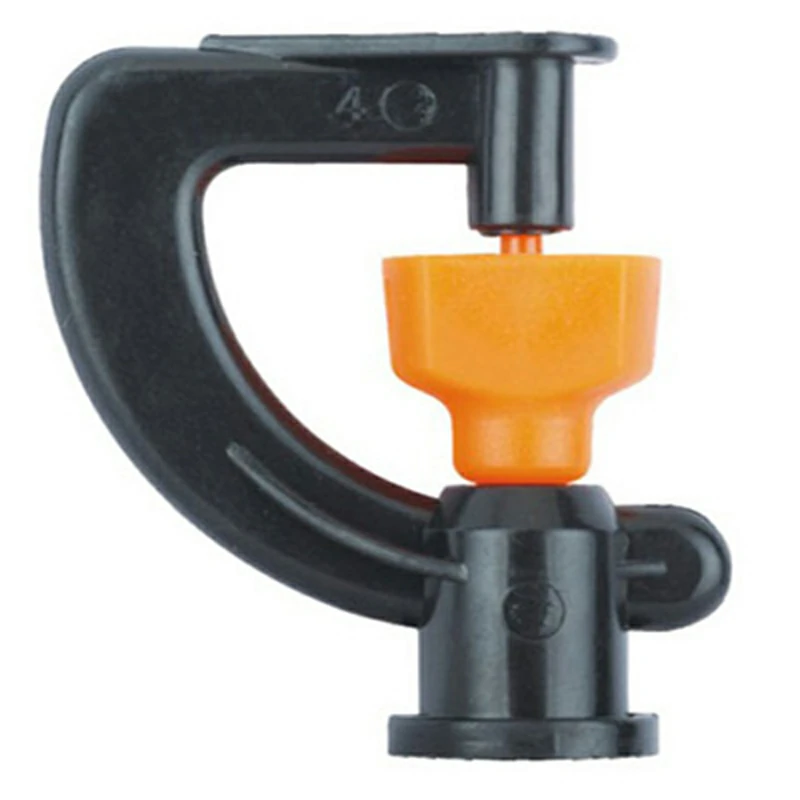The purpose of this article is to inform you about the basics of micro-sprinkler irrigation so as to determine whether it is the right fit for your project.
Using water more efficiently has become increasingly important to the farming industry. Precision irrigation has stepped in as a hero in this plight.
Precision irrigation has the aim of giving the crop exactly what it needs at the exact right time. Depending on a host of factors, micro-sprinkler irrigation may be just the right precision tool for the job.
Micro-sprinkler irrigation is often perceived as a wasteful or non-precise irrigation method, especially when compared to drip irrigation. If the system is however designed in a smart and efficient way and all the necessary aspects are considered, high water-use efficiency can be achieved with this irrigation method.
An informed decision must be made, comparing all suitable types of irrigation to find the best fit for your circumstances.
The ins and outs
Micro-sprinkler irrigation is used for low volume irrigation and can be used in various irrigation systems, including overhead irrigation on vegetables and in nurseries, surface irrigation in orchards, overhead irrigation greenhouses and frost protection. It can help the farmer use water more efficiently and can bring about improved yields – all due to overall better water management.
Some localised micro-sprinkler irrigation systems also make it possible to apply fertiliser through the irrigation system. This brings about higher, although not the highest, efficiency in fertiliser application and may help the farmer save on fertiliser and labour costs. Note that the control of weeds and careful planning around the placement of sprinklers, become crucial in this context.
Pros and cons
Irrigating with micro sprinklers allows for both full-surface irrigation and localised irrigation. An advantage of micro-sprinkler irrigation compared to drip irrigation is that a larger soil volume can be wetted, making irrigation management easier. Another advantage is that emitter blockages are more visible.
A few disadvantages of micro-sprinkler irrigation systems compared to drip irrigation, include:
- Higher evaporation losses and run-off during water application and from the soil surface.
- Not being able to work in the orchard during active irrigation.
- Higher maintenance costs due to possible damage caused by workers in the orchards.
Remember, that the physical inspection of micro sprinklers is important due to the higher possibility of emitter damage.
Proper management of micro-sprinkler irrigation systems is important, and it is necessary to do regular tests in the field to check the soil moisture levels at different depths. This will indicate whether too much or too little water is being applied.
Micro-sprinkler irrigation can be very beneficial when applied in, for example orchards, if the correct sprinkler is selected, if water penetration is good and run-off can be prevented, and where cover crops are planted between the tree rows. It is also an ideal choice for non-row cropping where drip irrigation is not suitable. Also remember that in greenhouses and nurseries, micro sprinklers are not only used for irrigation but also for cooling and humidity control.
Designing a suitable system
To design a micro-sprinkler irrigation system, you will first need to calculate the ETc (crop water requirement) for the crop in the specific area. Design the system according to the highest ETc value in a year, so that the water supply will be sufficient under those circumstances. This should indicate whether the farm will have enough water to implement the system for a certain crop.
When choosing the correct micro sprinkler, it is important to know the infiltration capacity of your soil, so that you can match the selected flow rate of the micro sprinkler to the infiltration capacity of the soil. On a heavier soil with high clay content, for example, it would be better to use a micro-sprinkler with a lower flow rate, to ensure good water distribution in the soil profile. If the flow rate is not matched to the infiltration capacity of the soil, run-off will occur.
It is also important to match the wetted diameter of the micro sprinkler to the size of the crop’s root zone and to inspect technologies that allows the wetted diameter to be adapted to the increasing size of the root zone as the crop develops.
Once the correct flow rate and wetted diameter has been identified, and you must choose between similar products. Select a micro sprinkler with the largest possible nozzle opening, as this will make it much less susceptible to clogging. It is also important to choose a micro sprinkler with insect protection, as insects entering the sprinkler is a regular occurrence.
Finally, to ensure uniform water delivery, remember to select a pressure-compensated micro sprinkler if the topography of your field requires it. A host of other factors will influence your decision on which micro sprinkler to use and how to apply it. Decisions must be made based on sprinkler spacing, sprinkler height and more.
Proven quality
Most importantly, do not waste your money and time on a poor-quality micro sprinkler. A new orchard, vegetable field or greenhouse is a massive investment and you must do everything you can to protect this investment and ensure that it delivers optimal return on investment. Firstly, make sure that you choose the correct type of irrigation system. Once you have determined this system to be micro-sprinkler irrigation, always select a micro sprinkler with a proven track record.
